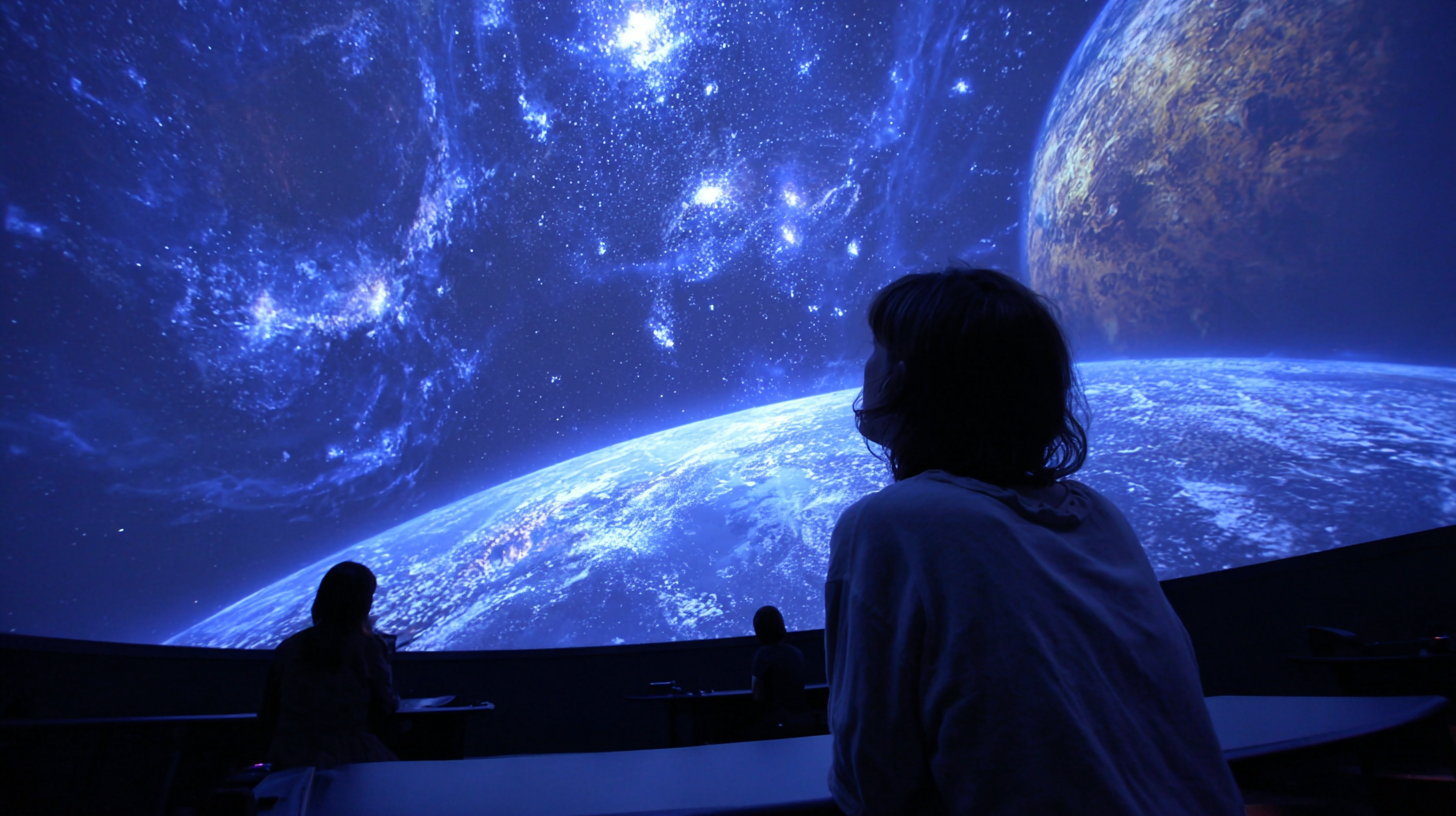The integration of immersive technologies in education has proven to significantly enhance the learning experience, with the Fulldome Planetarium emerging as a cutting-edge tool in this domain. According to a report by the International Society for Technology in Education, 94% of educators believe that immersive learning experiences, such as those provided by fulldome environments, lead to greater student engagement and retention. Additionally, a study conducted by the National Education Association highlights that the use of visual and experiential learning methods can improve comprehension by up to 80%. As educational institutions increasingly seek innovative ways to captivate students, the Fulldome Planetarium stands out as a transformative resource, providing a dynamic space where learners can explore astronomy, science, and art in a captivating, 360-degree format. This article will outline effective strategies to harness the power of a Fulldome Planetarium, creating an engaging and enriching learning environment.

 Fulldome planetariums provide a transformative learning environment that leverages immersive technology to enhance educational experiences. Research indicates that immersive learning can significantly boost retention rates; a study published in the Journal of Educational Psychology showed that students exposed to immersive environments retained information up to 75% longer than those in traditional settings. This is particularly beneficial in subjects like astronomy, where the ability to visualize complex concepts and celestial phenomena fosters deeper understanding and engagement.
Fulldome planetariums provide a transformative learning environment that leverages immersive technology to enhance educational experiences. Research indicates that immersive learning can significantly boost retention rates; a study published in the Journal of Educational Psychology showed that students exposed to immersive environments retained information up to 75% longer than those in traditional settings. This is particularly beneficial in subjects like astronomy, where the ability to visualize complex concepts and celestial phenomena fosters deeper understanding and engagement.
Moreover, the interactive nature of fulldome experiences encourages active participation, further enhancing cognitive development. The National Endowment for the Arts reports that students involved in arts-integrated learning environments, such as those found in planetariums, demonstrate improved critical thinking skills and creativity. These environments not only stimulate interest in science and technology but also foster teamwork and communication skills, as students often collaborate in exploring and discussing the immersive narratives presented in fulldome shows. Embracing fulldome planetarium experiences can therefore revolutionize educational practices, making learning both engaging and effective.
Incorporating a fulldome planetarium experience into the learning environment can significantly enhance student engagement through visual and auditory storytelling techniques. The immersive nature of a planetarium allows students to step into a captivating world where scientific concepts can be visualized in real time. As celestial bodies and astronomical events unfold around them, students are drawn into narratives that intertwine art with science, facilitating deeper comprehension and retention of material.

Moreover, the auditory elements of storytelling play a crucial role in this engagement. The combination of narrations, soundscapes, and music enhances emotional connectivity with the content, making lessons more memorable. For instance, a well-crafted story about the formation of the universe can captivate students' imaginations, providing context to abstract concepts. This multisensory approach not only makes learning enjoyable but also caters to diverse learning styles, allowing each student to grasp complex ideas through their preferred method of learning. As educators embrace these innovative techniques, they can transform their classrooms into dynamic spaces that inspire curiosity and foster a lifelong love for learning.
The Fulldome planetarium experience offers a unique gateway to understanding
the vastness of the universe. By immersing learners in stunning 360-degree visuals
and dynamic soundscapes, it cultivates a sense of wonder that is essential for fostering curiosity. Within this environment,
students can explore celestial phenomena, engage with astronomical concepts, and embark on imaginative journeys through space.
This interactive engagement not only enhances retention but also inspires deeper inquiry into
the mysteries of the cosmos.
Moreover, the Fulldome experience encourages collaborative exploration, where learners can share their discoveries and questions
in real time. This communal aspect, combined with hands-on activities and discussions led by skilled facilitators, nurtures
critical thinking skills and promotes a culture of exploration.
As students delve into topics such as constellations, black holes, and space missions, their innate curiosity is sparked,
driving them to seek knowledge beyond the classroom and pursue further studies in astronomy and space science.
The fulldome planetarium experience offers a unique opportunity to enhance collaboration and teamwork among participants. By immersing teams in a dynamic and visually engaging environment, these interactive activities stimulate communication and encourage group problem-solving. When participants work together to explore the universe, they foster a sense of shared purpose, making it easier to break down barriers and build trust within the team.
Activities within the fulldome setting can be tailored to promote various collaborative skills, such as critical thinking and creativity. For instance, team challenges that require participants to navigate celestial simulations or solve astronomical puzzles can effectively highlight the importance of diverse perspectives. Through engaging in these hands-on experiences, team members learn to appreciate each other's strengths and collaborate more effectively, ultimately leading to improved teamwork both in the planetarium and in their everyday work environments.
This bar chart illustrates the impact of interactive planetarium activities on collaboration and teamwork among participants. The data represents the average score (out of 10) based on feedback from different team activities conducted in a fulldome planetarium setting.
The integration of technology into the curriculum has become increasingly vital in enriching the learning experience. A fulldome planetarium offers a unique platform for immersive learning, where students can explore
astronomical concepts, geographical phenomena, and even historical events in a captivating manner. By utilizing advanced projection technologies and interactive software, educators can create lessons that not only inform but also engage students at a deeper cognitive level. This multisensory approach allows learners to visualize complex information, making abstract concepts more concrete and easier to grasp.
Moreover, the fulldome setting fosters collaboration and discussion among students. Teachers can design activities that encourage teamwork, such as group projects that explore planetary systems or simulations of environmental changes. By integrating these interactive elements into the curriculum, students can develop critical thinking and problem-solving skills while actively participating in their education. The immersive environment stimulates curiosity and inspires a love of learning, transforming traditional classroom dynamics into an explorative experience that promotes both academic achievement and personal growth.






